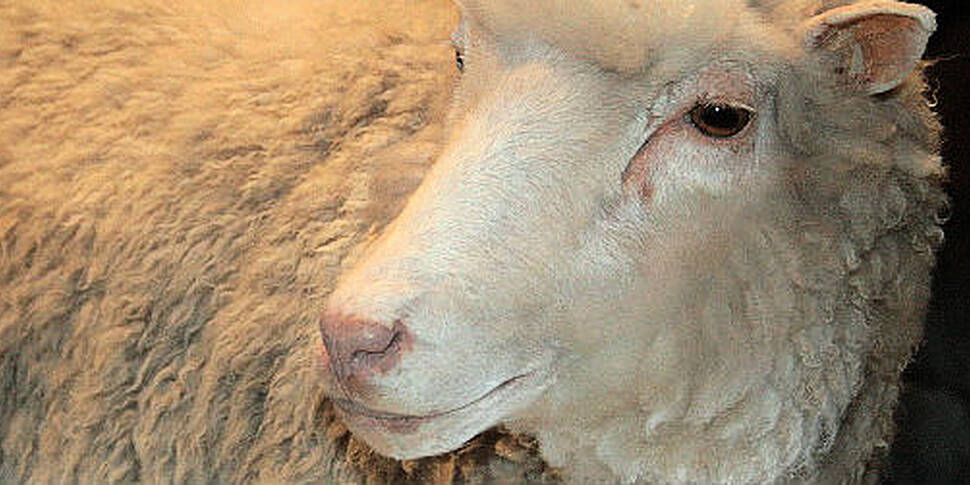In the annals of celebrity animals, there’s arguably only one sheep. Named after the country and western singer, Dolly was born on this day in 1996, a momentous scientific achievement. The first mammal ever to be cloned from an adult cell, Dolly’s arrival on the scene caused much public debate on the ethical limitations of science. Threats of imminent dangers and mad science abounded, along with the boundless possibilities for mankind such research could produce. Neither proved particularly warranted, but that a humble ewe could inspire the world says a lot for a Finn Dorset sheep.
Two decades later and in 2016, 13 years after she succumbed to the kind of progressive lung disease that plagues sheep kept indoors, Dolly stands, stuffed and mounted, at the National Museum of Scotland. Created at Edinburgh’s Roslin Institute, Dolly poses as many questions today as she did at the end of the 20th century. Scientists, ethicists, philosophers, and everyone else still have no idea where her creation will take mankind – nor any idea whether it’s a path we should follow to any conclusion.
Dolly’s genesis was a bit of an accident; the original goal of the experiment, carried out by Sir Ian Wilmut and Keith Campbell, was to attempt to find a better way to reproduce genetically modified livestock. The research team was interested in learning more about how cells, the building blocks of life, develop and whether a modified cell could be used to make an entirely new animal.

Dolly with British embryologist Professor Sir Ian Wilmut, one of the two men who led the research team that created her at the University of Edinburgh's Roslin Institute [Andrew Milligan / PA Archive/Press Association Images]
It wasn’t easy, taking 277 attempts to actually clone Dolly. Many of the cloned embryos were miscarried before she arrived on July 5th, 1996.
Yes, as it turned out, it could. But in finding that out, the science proved bigger and bolder than anyone could have thought. Dolly’s birth broke new ground on what was possible in the genome field, opening up the possibility of developing personalised stem cells, curing incurable diseases and conditions, creating personalised organs that could not be rejected. There is even the potential to modify embryos with inherited diseases to ensure that a baby is never born with that ailment.
To say this raises ethical issues and creates some discomfort for many is understating it. There are many religious leaders, governments, and even many scientists who believe that cloning mankind is a bad idea. In 2016, the technology out there does not support it on a technical level, but should it ever be possible, what it means for us as a species has as many useful as terrifying implications. But that the possibility of a world of men and women, and everything in between, free from diseases inherited from our ancestors, grandparents, and parents owes it all to a woolly sheep standing behind glass in a museum in Scotland shows us just how much potential lies in the world around us.









